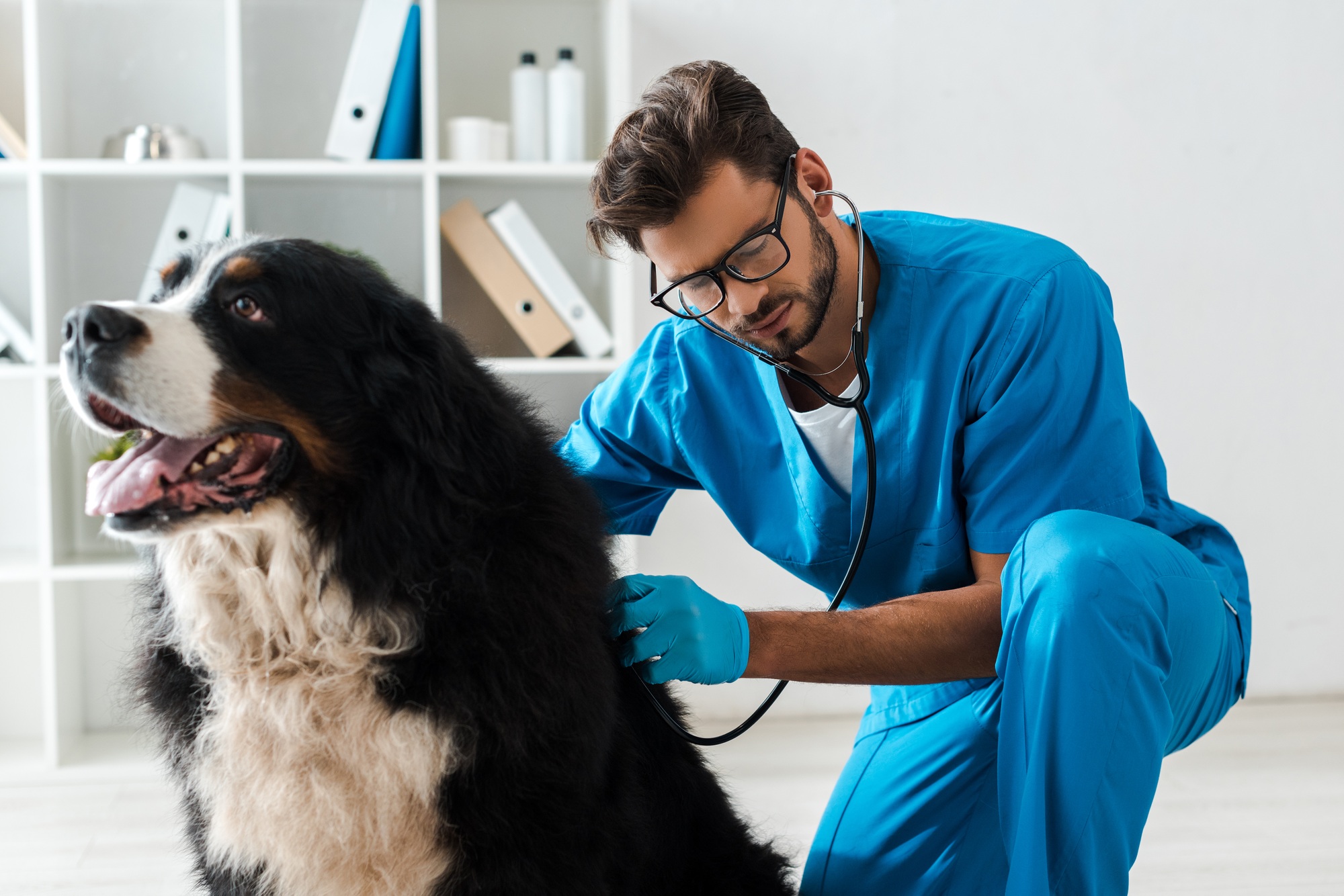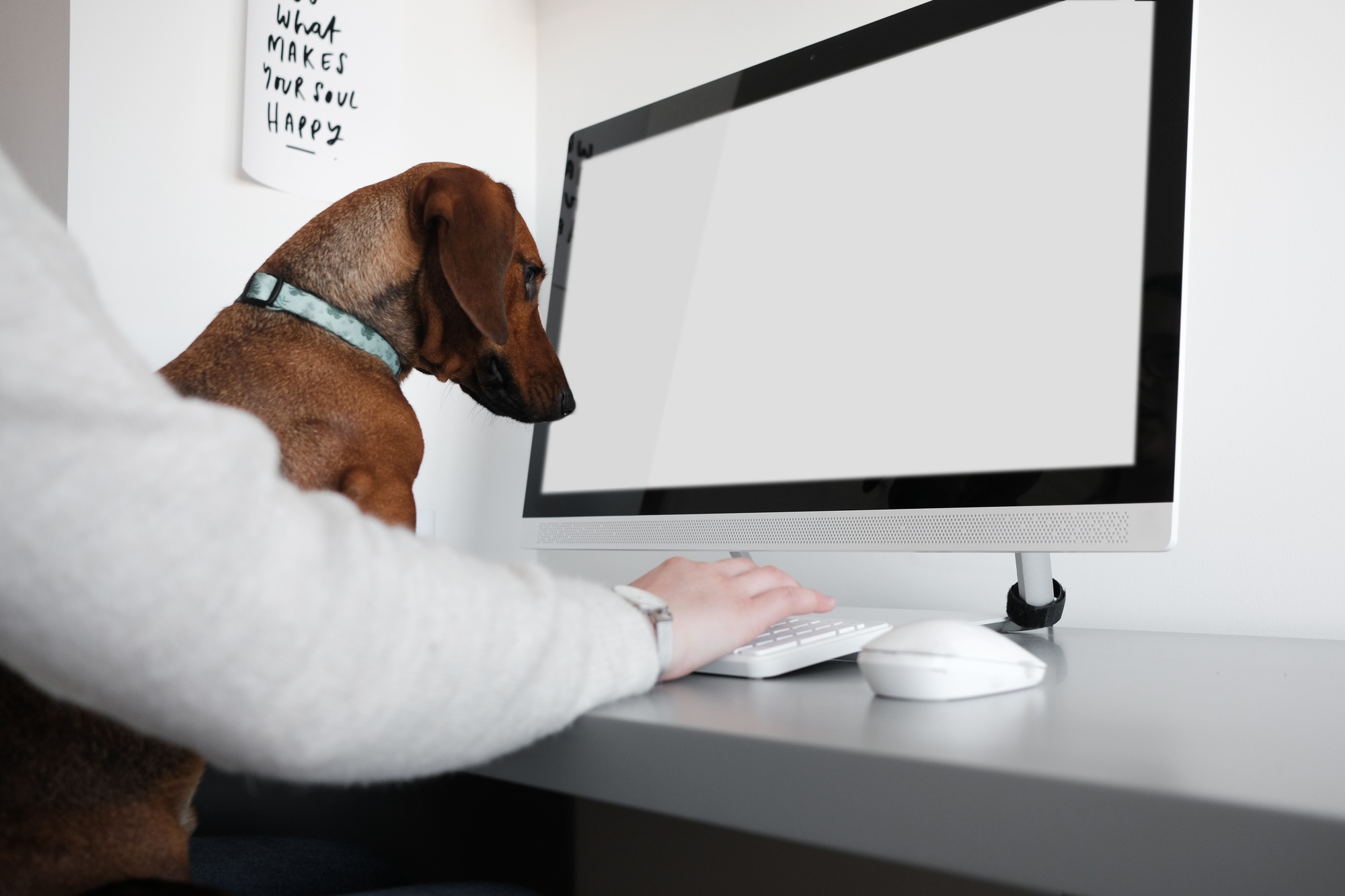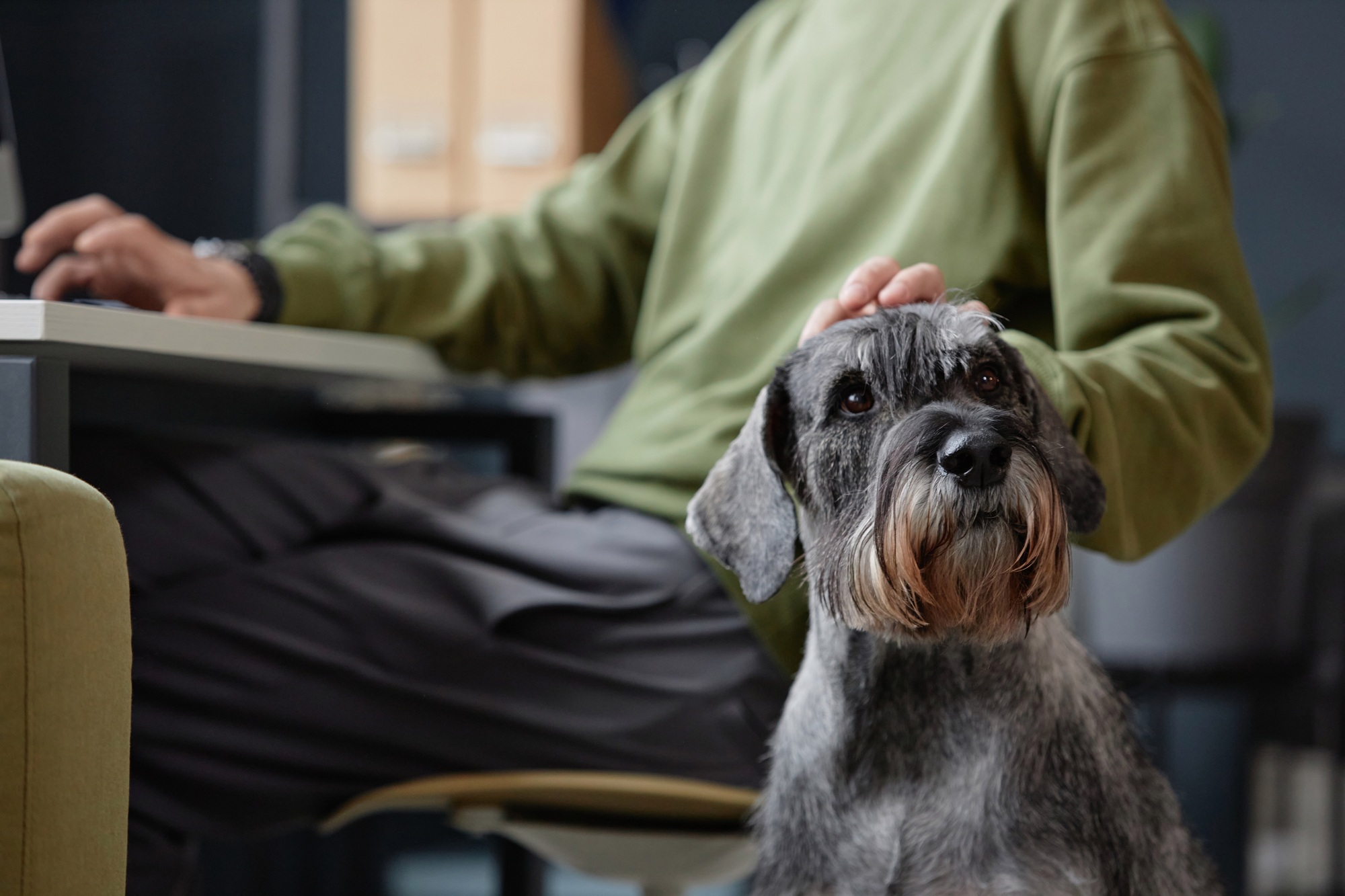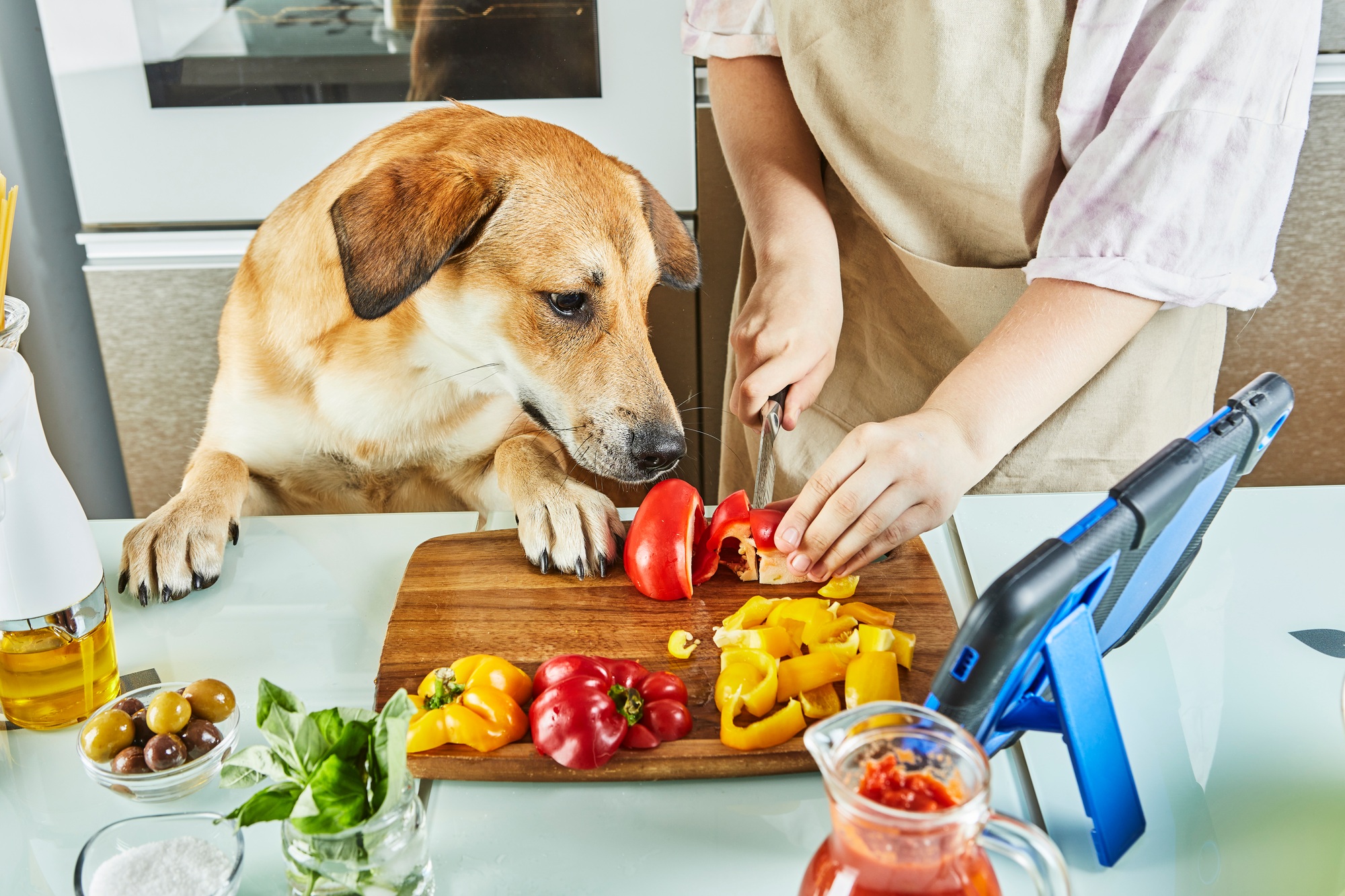
As a pet owner working from home, you have the unique advantage of being close to your dog throughout the day. This proximity allows you to notice any potential health issues early and take action before they become serious.
Whether it’s a slight limp, a change in appetite, or odd behavior, your dog might show subtle signs that something is wrong. The earlier you catch these symptoms, the better you can care for your dog and ensure their health.
We’ll cover 5 common dog health issues and provide you with tips on how to spot them while working from home, ensuring your dog stays happy and healthy.
1. Joint Pain and Arthritis
1.1 Signs of Joint Pain in Dogs
As dogs age, they may develop joint pain or arthritis, especially in larger breeds. The most common symptoms are limping, stiffness, or difficulty getting up after lying down. You may notice that your dog hesitates to jump on the couch or up the stairs, or seems reluctant to take long walks. Joint pain can also cause your dog to be more lethargic or show signs of discomfort when moving.
If you work from home and spend time with your dog, you’ll likely notice these changes in their behavior. Dogs with joint pain might also become grumpy or more irritable when touched in certain areas, particularly their hips, legs, or joints. Pay attention to these signs and give your dog extra attention to prevent unnecessary strain on their joints.
1.2 How to Address Joint Pain
If you suspect your dog is dealing with joint pain or arthritis, it’s important to consult your veterinarian for a proper diagnosis. Your vet may recommend joint supplements, anti-inflammatory medications, or physical therapy to help ease the pain. Additionally, providing a comfortable bed or orthopedic cushion can help alleviate pressure on sore joints. Limiting high-impact activities and taking shorter walks can also help reduce discomfort. Regular massage or gentle stretching can be beneficial, especially if you can manage these sessions while working from home.
2. Digestive Issues
2.1 Signs of Digestive Distress
Dogs are notorious for eating things they shouldn’t, which can lead to digestive issues like diarrhea, vomiting, or bloating. Changes in your dog’s bathroom habits, including more frequent or less frequent bowel movements, could signal digestive issues. You might also notice your dog having difficulty passing stools or showing signs of discomfort while trying to go outside.
When working from home, you’re likely to observe your dog’s eating habits more closely. If your dog suddenly refuses food, eats less, or has an unusual increase in appetite, these could all be signs that something is wrong with their digestive system. Bloating, excessive gas, or vomiting should also be monitored closely.
2.2 How to Manage Digestive Issues
If your dog is experiencing digestive distress, start by eliminating any potential sources of stress, such as sudden changes in diet or treats. Make sure your dog is eating high-quality food that suits their specific needs. Keep track of any changes in their diet and consider whether certain foods may be triggering their digestive upset. If symptoms persist, it’s essential to visit the vet for a diagnosis and treatment plan.
In the meantime, ensure that your dog has plenty of fresh water to stay hydrated, especially if vomiting or diarrhea are present. A bland diet (such as boiled chicken and rice) is often recommended for dogs with mild digestive issues, but always check with your vet before making dietary changes.
3. Dental Problems
3.1 Recognizing Dental Issues in Dogs
Dental health is often overlooked, but it’s crucial for your dog’s overall well-being. Common dental problems in dogs include tartar buildup, gum disease, and tooth decay. Symptoms of dental issues include bad breath, drooling, difficulty chewing, or pawing at their mouth. You may also notice red or inflamed gums or your dog being reluctant to eat hard food.
Since you’re home most of the day, you’ll likely notice if your dog is avoiding their food or displaying signs of pain when chewing. Regularly checking your dog’s teeth and gums can help catch problems early. If your dog is particularly fussy about chewing or becomes sensitive around their mouth, it might be time to investigate their dental health.
3.2 How to Maintain Oral Health
Good dental hygiene can prevent a lot of dental problems. Regularly brushing your dog’s teeth with dog-friendly toothpaste can help remove plaque and prevent tartar buildup. If brushing is difficult, there are also dental chews and special toys designed to clean teeth while your dog plays.
Routine checkups at the vet will also help spot any serious issues early. Your vet may recommend professional cleanings, especially if your dog has tartar buildup or gum disease. Maintaining a balanced diet and providing chew toys that promote dental health will help ensure that your dog’s teeth stay in good shape.
4. Skin Allergies
4.1 Identifying Symptoms of Skin Allergies
Skin allergies are a common issue among dogs and can be triggered by environmental factors like pollen, dust mites, or even certain food ingredients. Symptoms of skin allergies include excessive itching, biting or licking at the paws, red or inflamed skin, and hair loss. Your dog may also develop hot spots, which are irritated, inflamed areas of skin that can become infected if left untreated.
Working from home gives you the opportunity to monitor your dog’s behavior closely. If you notice your dog constantly scratching or licking themselves, it may be a sign of allergies. Skin irritation can also manifest as bald patches or flaky skin, so be vigilant about any changes in their appearance.
4.2 Managing Skin Allergies
If you suspect your dog has skin allergies, the first step is to identify the source of the allergy. Common allergens include certain foods, grasses, or even fleas. You can work with your vet to conduct tests that can pinpoint the allergen and help create a treatment plan. Medications like antihistamines, steroids, or specialized shampoos may be recommended to reduce inflammation and itching.
In addition to medical treatment, you can help alleviate your dog’s symptoms by regularly grooming them and keeping their environment clean. Bathing your dog with a hypoallergenic shampoo can provide relief, and using a high-quality, allergy-friendly dog food can reduce flare-ups related to food allergies.
5. Obesity and Weight Management
5.1 Recognizing Weight Issues in Dogs
Obesity is becoming increasingly common in dogs, and it can lead to various health problems, including joint issues, heart disease, and diabetes. Symptoms of obesity include excessive weight gain, lethargy, difficulty moving, or a visible change in body shape. If your dog is carrying excess weight, you may notice that they are slower during walks or have trouble jumping or climbing stairs.
Working from home provides the opportunity to closely monitor your dog’s activity levels and eating habits. If your dog is becoming more sedentary, it’s important to encourage regular exercise and feed them a well-balanced diet to prevent obesity. If your dog’s weight seems to be creeping up, it’s time to reassess their diet and activity routine.
5.2 How to Maintain a Healthy Weight
Maintaining a healthy weight for your dog starts with proper portion control and regular exercise. Make sure you’re feeding them the right amount of food based on their age, breed, and activity level. Measure their food rather than free-feeding to avoid overfeeding.
You can also help your dog stay active by taking regular walks, playing fetch, or engaging in other physical activities. Mental stimulation through training sessions or puzzle toys can help keep them engaged and reduce boredom, which may lead to overeating. If you’re concerned about your dog’s weight, consult your vet for a weight management plan tailored to your dog’s needs.
Conclusion
Working from home gives you the unique advantage of closely observing your dog’s health and behavior. By being proactive and attentive to common health issues like joint pain, digestive problems, dental issues, skin allergies, and obesity, you can help ensure your dog stays happy and healthy.
Early detection of symptoms allows you to seek veterinary care before issues become serious, leading to a longer and more comfortable life for your furry friend. Pay attention to your dog’s cues and make health a priority, and your work-from-home routine will benefit both you and your dog.
















